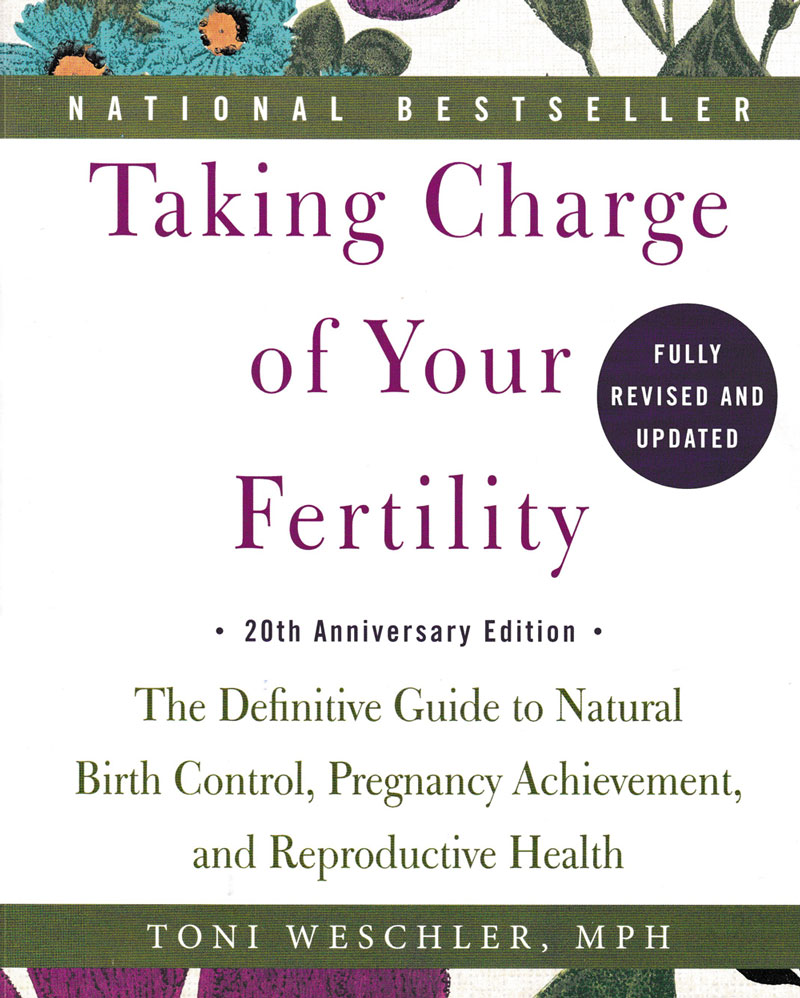Taking Charge of Your Fertility 2015 by Toni Weschler is the 20th anniversary edition of a popular book describing a type of natural family planning. Named the fertility awareness method (FAM), it relies on observing and charting the following three fertility signs to establish which days of your cycle you’re fertile:
- Cervical fluid
- Waking temperature
- Cervical position
Women’s health
By following the simple rules and carefully charting these three signs, women have a reliable tool for either natural birth control or achieving pregnancy. They will also have a way of picking up on health issues for example charting low temperatures could have a connection with a thyroid disorder which may affect fertility. Charting will also monitor irregular or unusual bleeding, vaginal or urinary tract infections, cervical anomolies, breast lumps, premenstrual syndrome or even a miscalculated date of conception.
Breastfeeding and fertility
I often get asked whether continuing to breastfeed will affect a mother’s chance of getting pregnant again. While women can get pregnant while breastfeeding, it may take up to a year or more to return to optimum fertility after the birth. Taking Charge of Your Fertility explains why the return of fertility varies so widely between breastfeeding women:
the reason why some nursing women do get pregnant and others don’t comes down to how they breastfeed, or more specifically, how intensively and how frequently.
every time a baby suckles at the breast, the mother releases prolactin and oxytocin, which in turn inhibits various ovulatory hormones, including luteinizing hormone
For more reading about breastfeeding and fertility see Can You Get Pregnant While Breastfeeding?
Answers to infertility
Understanding FAM (something not taught in medical schools) can help you to help your doctor diagnose lack of ovulation, short luteal phases, infertile cervical fluid, hormonal imbalances and insuffucient progesterone levels. It can also help explain miscarriages and be an accurate aid to get the timing right on important fertility tests. The book includes a review of various fertility tests and treatments including hormone blood tests, diagnostic procedures and steps for in vitro fertilisation (IVF). It also discusses treatment options for polycystic ovary syndrome (PCOS), hints for increasing fertility of sperm, an explanation of what hormone therapy can and can’t treat and an in depth discussion of unusual bleeding in your cycle.
Tips for increasing your fertility include:
- Awareness that ovulation doesn’t always occur on 14th day and normal cycles are not always 28 days.
- Understanding the role of body temperature as a sign of fertility and why ovulation predictor kits don’t work (by the time basal body temperature spikes the egg is typically already dead and gone).
- The ideal BMI (body mass index) for normal ovulation (being overweight can cause extra oestrogen production affecting your complex hormonal feedback system and being underweight can prevent normal cycles too).
- How caffeine, alcohol or antihistamines can affect fertility
All your questions answered
With some 536 pages including photocopiable charts (also downloadable here), resources, trouble shooting appendices and even an accompanying App, you will find answers to the following questions on fertility and much more:
- How long do sperm live?
- What are the side effects of conventional birth control methods?
- What causes cysts?
- What is endometriosis?
- Can stress, diet or night lights affect fertility?
- Are there any herbs that can treat conditions associated with hormonal imbalance?
Taking Charge of Your Fertility will be an essential book on your shelf if you are hoping to become pregnant or trying to avoid it by natural means, whether you are breastfeeding or not.
